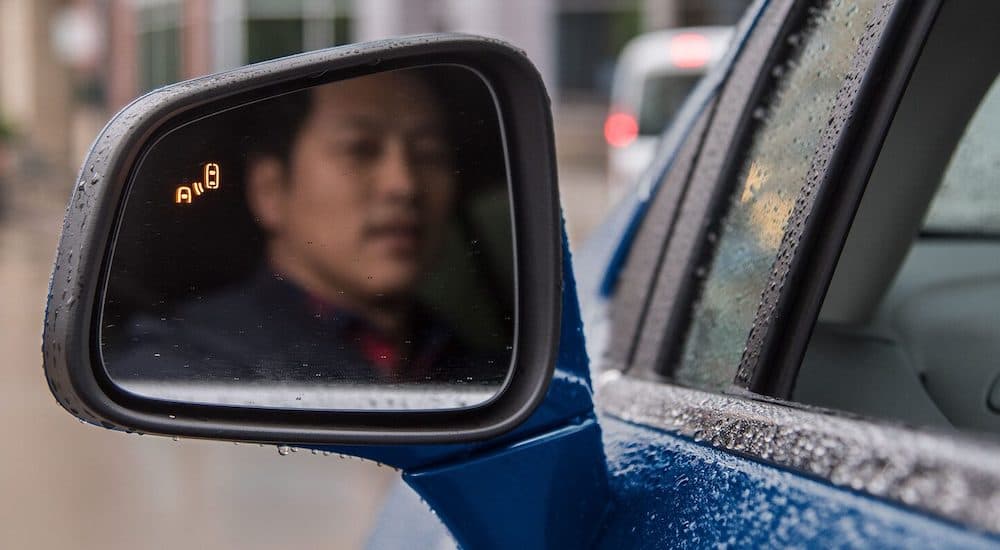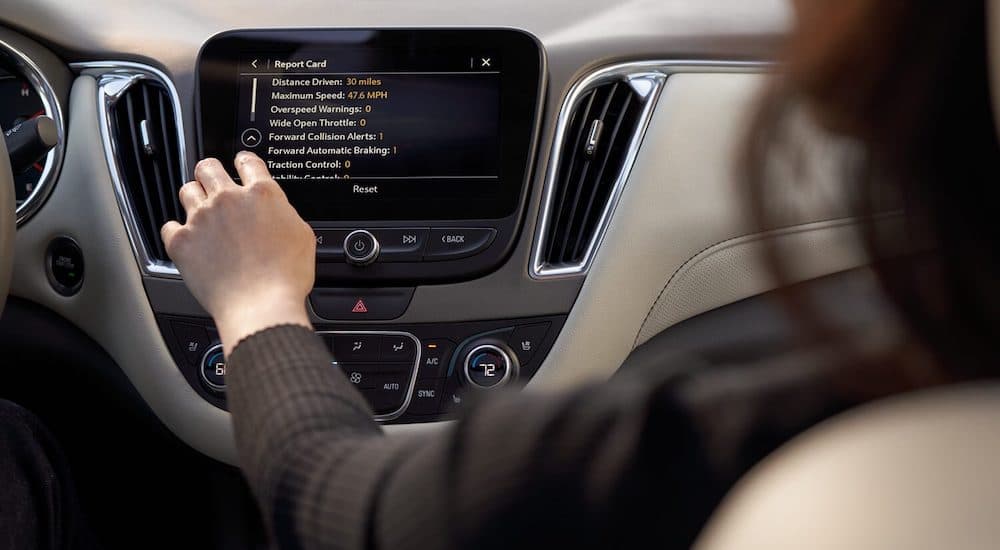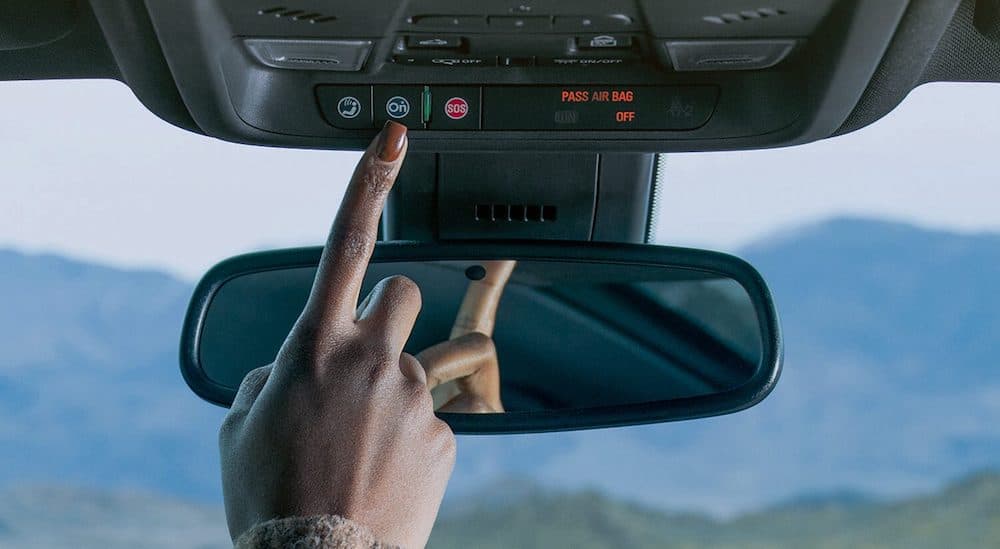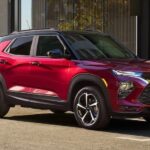It wasn’t too long ago that drivers and passengers could slide into the car, start it up, and head down the street with nothing but their destination on their minds. Ensuring everyone was buckled up wasn’t even considered. Today, some vehicles won’t even start without this confirmation, like any Chevy models with Buckle-to-Drive activated. While this feature is only operational when Teen Driver mode is also engaged, it might make you wonder about the history of automotive safety as well as what other features Chevy Safety Assist offers today’s drivers.
Chevy’s collection of driver assistance features—known as Chevy Safety Assist—first hit Chevrolet dealers in 2020. Today, these six standard features can be found in most of Chevy’s vehicles, including the brand-new 2024 Traverse and Trax. A look at what is included with Chevy Safety Assist—as well as what vehicles come equipped with it—is explored in detail toward the end of this article, but I’d first like to explore how we got from “Just drive…” to “There’s a vehicle lurking in your right blind spot, your child just unbuckled their seatbelt, and I can take over your acceleration if you’d like to rest your leg.” Safety tech sure has come a long way…
A Look at Automotive Safety Through the Years
Over the years, there have been major breakthroughs in automotive safety, with new developments targeted at safeguarding drivers, pedestrians, and other road users. The development of car safety measures over the last several decades is indicative of a dedication to lowering the frequency and severity of accidents and collisions.
When cars first came out, the focus was on functionality above all, with safety concerns firmly planted in the rearview mirror (if there had been one). Between the early 1900s and the 1930s, the most significant safety measure put in place was the addition of headlights so that workers could continue doing their jobs as the sun went down and to improve visibility for others traveling on the roads. It was also during this time that states began creating traffic laws.
Fast forward twenty years to Swedish engineer Nils Bohlin, who designed the three-point seatbelt that is still used today. At the same time, Nash Motors made the seatbelt available for American drivers in its Airflytes model, while Volvo became the first manufacturer to use it in production cars in 1959. This addition led to testing—specifically crash tests—in the 1960s, which offered data that increased interest in safety measures, as the reality of just how dangerous driving could be became more well-known.
Motivated by the results of these tests, the first Federal Safety Standards for cars were adopted in 1968, focusing on creating safety standards for the design and construction of vehicles. Shortly after that, the United States established the National Highway Traffic Safety Administration (NHTSA), which quickly led to the increased use of seatbelts as well as the addition of airbags in high-end cars and anti-lock braking systems, among other things. However, it wasn’t until 1984 that New York State passed the first seatbelt use law that required they be used in passenger vehicles.
In the 1990s, testing continued, leading to advanced technology that is still in use today. This tech included Electronic Stability Control (ESC), which helps avoid sliding and loss of control as well as increases protection from side impacts through the use of side-impact and curtain airbags. Additionally, a focus on advanced driver assistance systems (ADAS) led to innovations such as lane departure warnings and adaptive cruise control.
These advancements continued, introducing systems for forward collision warnings, lane-keeping assistance, and autonomous emergency braking. In fact, in the last ten years, safety technology has blown past what many considered to be well out of reach to include things like SuperCruise, the first legitimate hands-free driver assistance technology. This feature is compatible with more than 400,000 miles of roads in the United States and Canada and is available on 2024 Chevrolet models like the Blazer, Silverado, Tahoe, and Suburban.
What Is Chevy Safety Assist?
Now that you have a greater understanding of the history of automotive safety, it’s time to take a look at Chevy’s collection of standard safety features. Your local Chevy dealer can walk you through which vehicles offer Chevy Safety Assist, as well as answer questions about how each feature works to help you determine the right car, truck, or SUV for you.
Forward Collision Alert and Automatic Emergency Braking: These two systems work together to alert you to a potential front-end collision. They use camera technology to scan the road ahead, letting you know when traffic flow changes or when an object enters your lane so that you can respond in time. Together, they can sense when you’re unable to respond and apply braking to help you potentially avoid the collision—or, at the very least, minimize the impact.
Forward Pedestrian Braking: When your vehicle is traveling at speeds between 5 and 50 mph, this system steps in to alert you to pedestrians that enter your lane, helping you avoid or reduce the impact of a collision by applying the brakes or enhancing your braking.
Lane Keep Assist w/ Lane Departure Warning: It happens before you know it… One minute, you’re focused on the road, and the next minute, you’re trying to remember if you closed the garage door and you sway too far to one side of your lane. When this happens, the Lane Keep Assist with Lane Departure Warning system gets you back on track with a gentle nudge on the steering wheel as well as other warnings if needed. It’s important to note that this system does not activate when the turn signal is on.
Following Distance Indicator: This system helps you stay with the flow of traffic while still ensuring you’re following at a safe distance. Additionally, it tells you the time (in seconds) between your vehicle and the next.
IntelliBeam High Beam Assist: While assistance with your high beams might not seem like a significant safety feature, it is when you’re trying to focus on an unfamiliar road. This system scans the road ahead for shadows and light, activating your high beams when visibility is low and it’s safe to do so. It also turns off the high beams when they’re not needed or when it senses an oncoming vehicle.
As mentioned earlier, Chevy also offers a Teen Driver mode that allows you to control things like audio volume and top speed, as well as the automatic activation of certain safety features. The vehicle senses that a teen is driving when a specific key fob is placed in the ignition.
Other safety features you can find throughout the Chevrolet lineup—in addition to the ones listed above and SuperCruise—include a Rear Camera Mirror that provides a wider and clearer view than the traditional rearview, Lane Change Alert with Side Blind Zone Alert to help you transition between lanes, and Rear Cross-Traffic Alert for easier reversing, among others.
Chevy and Safety Go Hand-in-Hand
Chevrolet works hard to provide today’s drivers with vehicles that easily transition from work to play, save them money at the gas pump, and keep them and their passengers safe regardless of whether the destination is a few blocks or a few hours away. As technology continues to improve, you can bet that Chevy will be improving right along with it to ensure its vehicles remain among the most safe.
If you’re interested in learning more about the safety features included in today’s 2024 Chevrolet lineup, stop by your local Chevy dealer for a review and demonstration of each.






